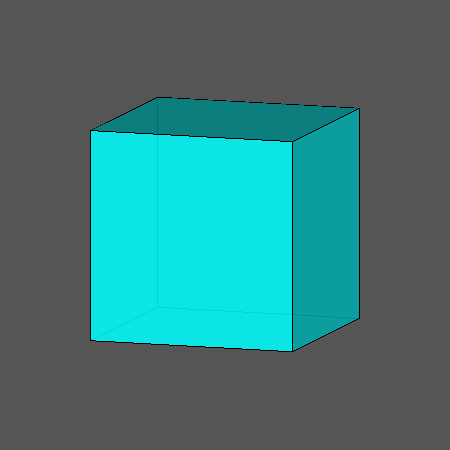
Want to master Microsoft Excel and take your work-from-home job prospects to the next level? Jump-start your career with our Premium A-to-Z Microsoft Excel Training Bundle from the new Gadget Hacks Shop and get lifetime access to more than 40 hours of Basic to Advanced instruction on functions, formula, tools, and more.A cuboctahedron is a polyhedron with 8 triangular faces and 6 square faces. Next post, we're going to create slightly more complicated objects from Sonobe Units. If you have any other ideas you would like to pursue, let me know in the forum. If you like these types of projects, let me know in the comments. Maybe you just have something cool that you made or saw on the web-you can share that, too! If you complete any of these projects, any of the variations, or any of the other previous Math Craft projects, please share with us by posting to the corkboard.
IPICTURE OF A CUBOCTAHEDRON FLATTENED HOW TO
This post/video shows how to make the icosahedron in more detail. This is because on an icosahedron, 5 triangles meet at each vertex. Notice the triangular figures.įrom this angle, notice how you can see pentagons and pentagrams. It will begin to curve into a ball:Ĭonnecting the last couple up can be a little challenging sometimes. Keep connecting pyramids together in cycles of 5. Keep forming pyramids connected to each other until you have a cycle of five of them connected around a point. How to Make an Icosahedron from 30 Sonobe Units This post/video shows how to make the octahedron in more detail. This is because 4 triangles meet at each vertex in a octahedron. Note that if you look at it this way you can see triangles.īut if you look at it this way, then you see squares. To finish the octahedron, you have to keep attaching units, always forming triangular pyramids in cycles of 4. The whole object will now bend into the third dimension. Use one Sonobe unit to connect the three pyramids, forming a fourth. Place three units together to form a triangular pyramid.īuild another pyramid connected to the first:įor an octahedron, there should always be cycles of four pyramids around a point. You must use the units that have an additional fold down the middle of the square. How to Make an Octahedron Out of 12 Sonobe Units This post/video shows how to make this origami cube in more detail. It should look like this before inserting the last unit:įinished cube. You should have 3 faces of the cube and one corner.Ĭontinue forming the cube. Now fold the squares together to form right angles and connect the units. Insert one Sonobe unit into the pockets of another unit: This post/video shows the process of making a Sonobe unit in more detail. When making the octahedron, or icosahedron you need to make an additional diagonal fold across the square part of the unit. There should be two triangular pockets that you can use to insert other units into. Tuck it into the bottom flap:įold the corners in to form a square. Refold the top corner down along the previously formed crease.

Fold the bottom flap up to meet the middle crease: Start by folding the top down to meet the crease in the middle:įold the bottom up to meet the crease in the middle:įold the bottom corner up to meet the upper crease: Now you are going to fold the paper in fourths. You should have a horizontal crease in the middle: If you are using colored origami paper, flip it so it is colored side down: This seems to be a good size for modular origami. This makes crease marks that I cut along to make 4 square sheets that are 4.25 inches on a side. I like using smaller paper so I usually fold in half vertically, and then horizontally.

The square created above is 8.5 inches on a side. Take an ordinary piece of paper and fold it diagonally. If you need to make square paper, here is a fast way to do it.


 0 kommentar(er)
0 kommentar(er)
